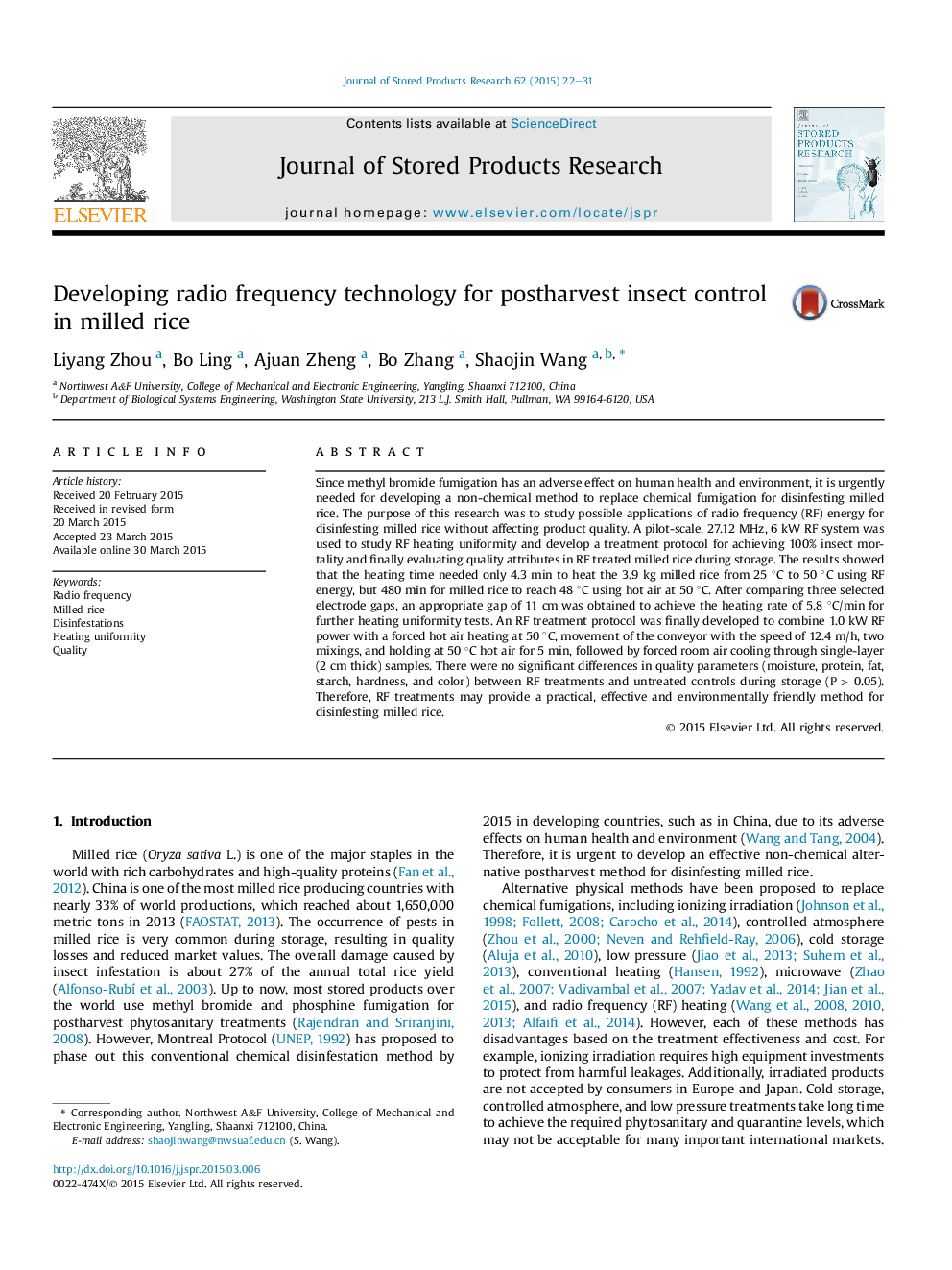| Article ID | Journal | Published Year | Pages | File Type |
|---|---|---|---|---|
| 4517045 | Journal of Stored Products Research | 2015 | 10 Pages |
•RF heating uniformity was improved by moving, mixing and holding.•RF treatment protocol was developed for achieving the target insect control in milled rice.•Rice quality was maintained after RF treatment and storage.•This provided potential RF disinfestation methods for industrial applications.
Since methyl bromide fumigation has an adverse effect on human health and environment, it is urgently needed for developing a non-chemical method to replace chemical fumigation for disinfesting milled rice. The purpose of this research was to study possible applications of radio frequency (RF) energy for disinfesting milled rice without affecting product quality. A pilot-scale, 27.12 MHz, 6 kW RF system was used to study RF heating uniformity and develop a treatment protocol for achieving 100% insect mortality and finally evaluating quality attributes in RF treated milled rice during storage. The results showed that the heating time needed only 4.3 min to heat the 3.9 kg milled rice from 25 °C to 50 °C using RF energy, but 480 min for milled rice to reach 48 °C using hot air at 50 °C. After comparing three selected electrode gaps, an appropriate gap of 11 cm was obtained to achieve the heating rate of 5.8 °C/min for further heating uniformity tests. An RF treatment protocol was finally developed to combine 1.0 kW RF power with a forced hot air heating at 50 °C, movement of the conveyor with the speed of 12.4 m/h, two mixings, and holding at 50 °C hot air for 5 min, followed by forced room air cooling through single-layer (2 cm thick) samples. There were no significant differences in quality parameters (moisture, protein, fat, starch, hardness, and color) between RF treatments and untreated controls during storage (P > 0.05). Therefore, RF treatments may provide a practical, effective and environmentally friendly method for disinfesting milled rice.
